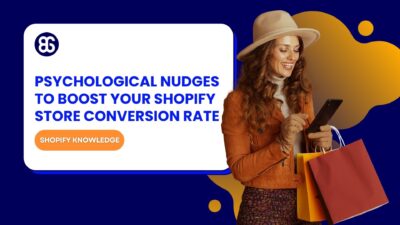
3 Simple Psychological Nudges To Boost Your Shopify Store Conversion Rate
The “Add to Cart” click is a good start, but high cart abandonment rates-70-80%-prove the completed purchase is the...
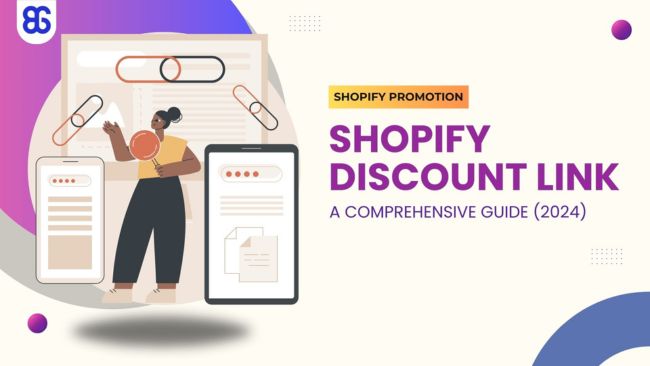
Digital Marketing Specialist
A Shopify discount link is a powerful tool that can help you boost sales by making it easier for customers to access discounts. While the most common use case of this link is automatically applying a discount code when a customer clicks the link, discount URLs offer many benefits that we will explore in more depth.
In this guide, we’ll show you how to create these links, combine multiple discount codes, and even redirect them to strategic landing pages. By the end, you’ll know how to leverage this feature to drive more revenue and enhance your marketing efforts.
A Shopify shareable discount link is a URL that promotes a store and discount code and automatically applies the discount code to a customer’s cart at checkout. The Shopify discount URL can be embedded into campaigns, emailed, or shared on social media.
Key benefits of using shareable discount links:
Unlike regular discount codes, shareable discount links don’t require customers to enter a code at checkout. Instead, the discount is automatically applied when the customer clicks the link. This makes it easier for customers to use the discount and reduces the likelihood of errors or frustration.
Firstly, I must say that the ideal thing about making a Shopify discount URL is that it’s totally free! However, there is a limitation to keep in mind.
One problem is that if you use a discount code to create “Amount off products,” “Amount off orders,” or “Free shipping,” then it’s ok, but if you create “Buy X Get Y,” the customer will have to manually add the product to the cart to receive the discount. In addition, it will be impossible to combine multiple discount codes using the same discount link.
Step 1: Create a new discount
Log in to your Shopify Admin > Discounts > Create discount
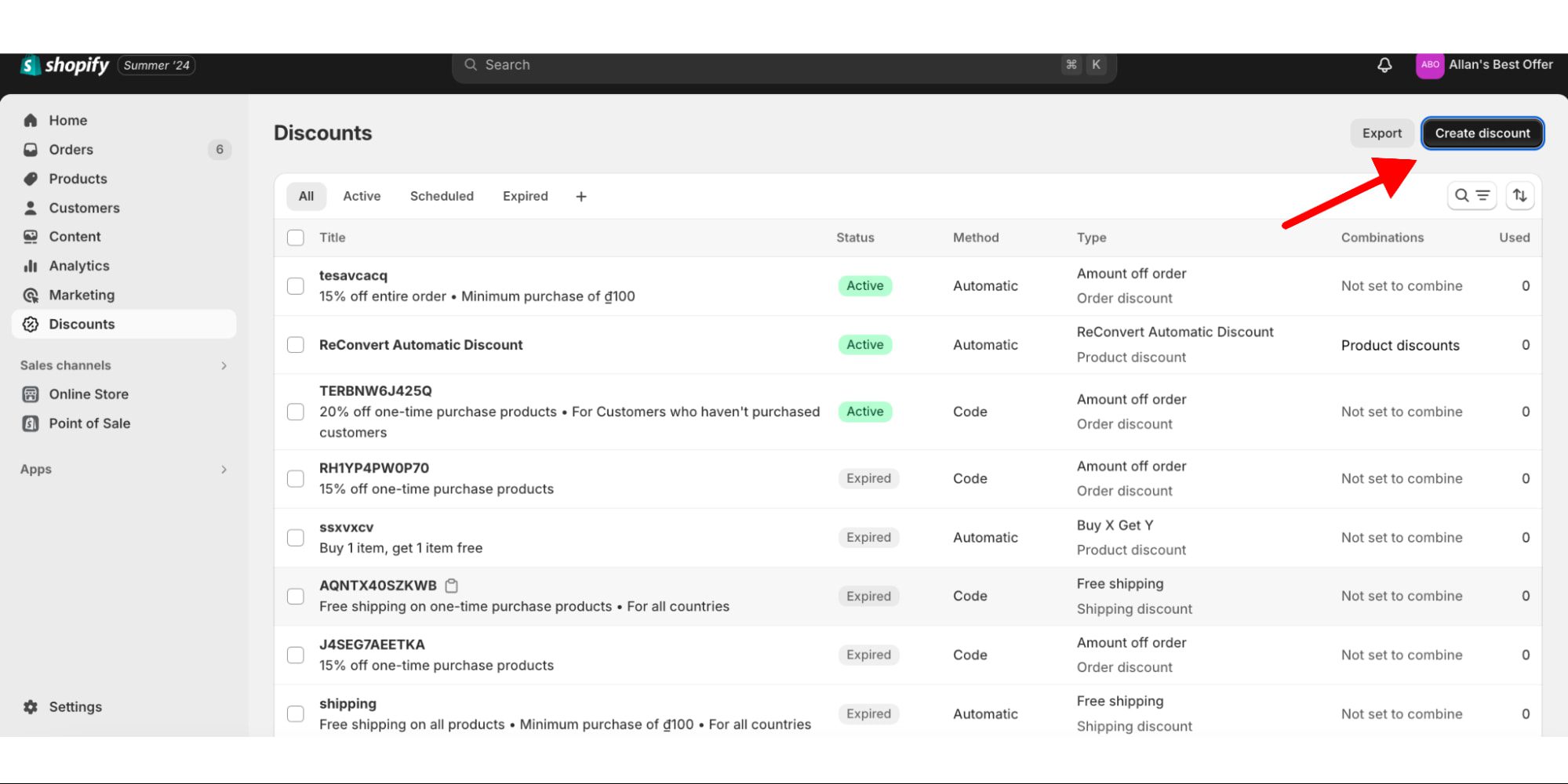
Step 2: Choose your discount type
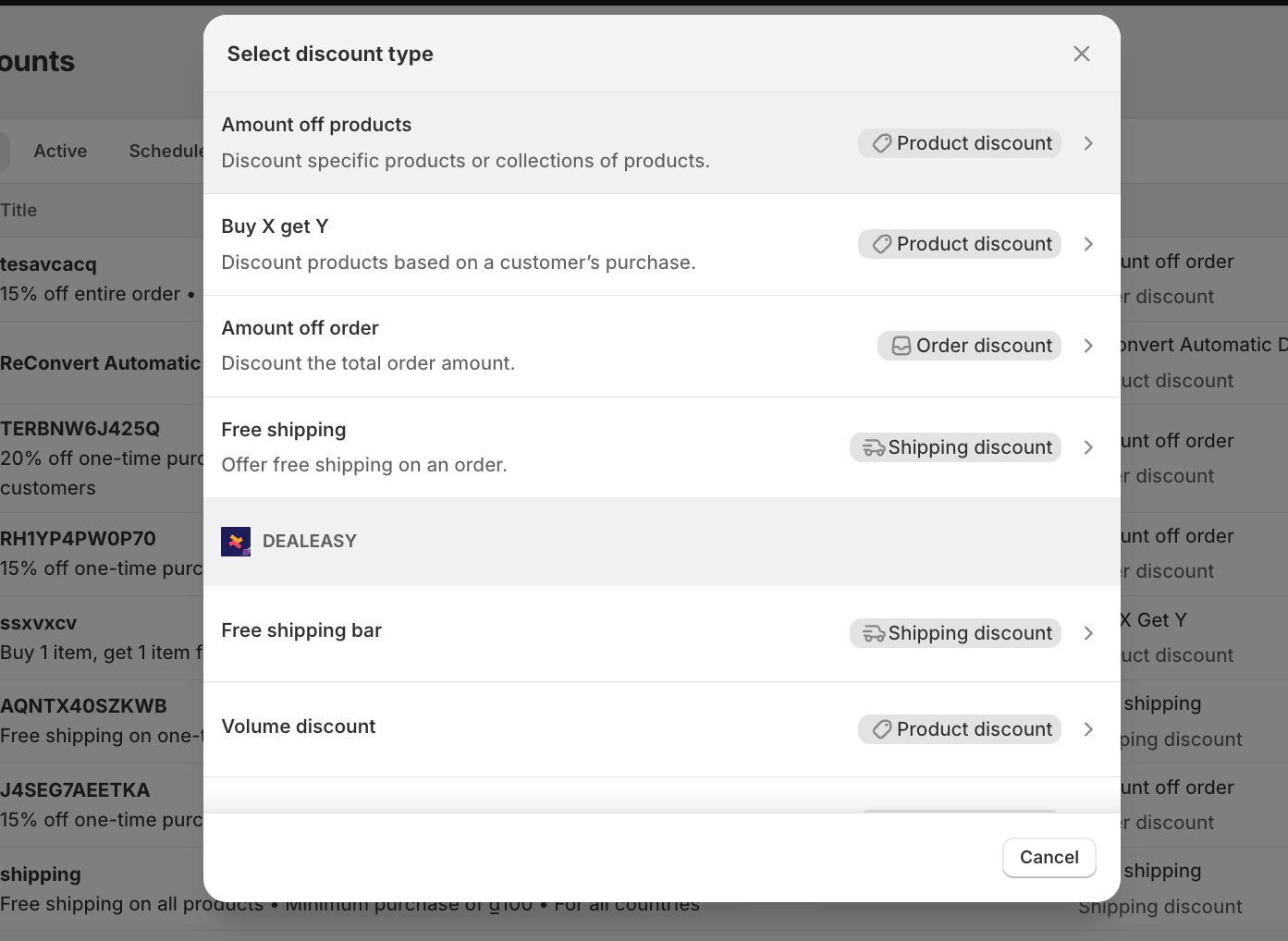
You’ll see three options:
– Amount off products: Choose this if you want to offer a specific amount or percentage off selected products.
– Amount off order: This option reduces the total order value.
– Free shipping: Use this to provide free shipping on orders.
For this example, let’s choose Amount off products.
Step 3: Choose the Discount code method
We’ll use a discount code instead of an automatic discount because automatic discounts don’t allow for shareable links. By using a discount code, we can create a link that automatically applies the discount at checkout.
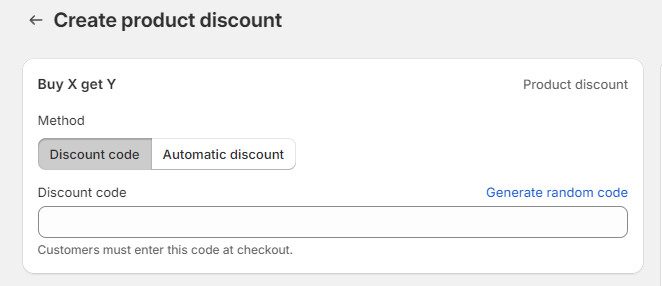
Step 4: Set up your discount details
– Discount code: Enter a code for your discount (e.g., “SUMMERVIBE20”).
– Discount value: Choose a percentage or a fixed amount.
– Applies to: Specify the collections or products the discount applies to. Then, browse them.
– Minimum requirements: Set any minimum requirements for the discount to apply (e.g., minimum purchase amount or quantity of items).
– Customer eligibility: Choose whether discounts apply to all customers or specific ones.
– Maximum discount uses: Select the number of times a discount code can be used
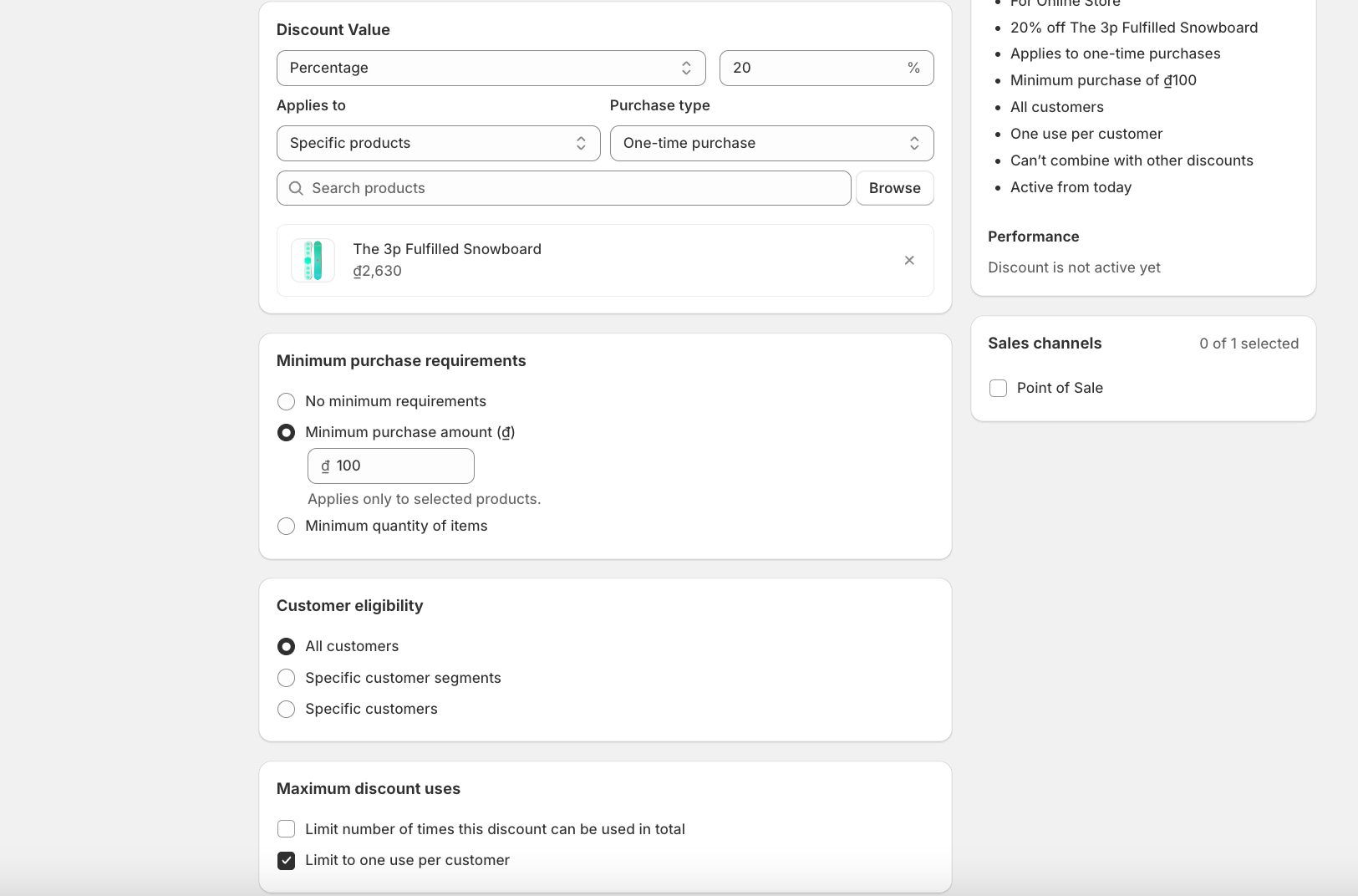
Step 5: Set active dates (optional)
Define the start and end dates for your discount. This is when the discount will be active and automatically applied at checkout.
Step 6: Save the discount and generate a shareable link

Click the “Save” button at the top right of the page. After saving your discount, you’ll see “Get a shareable link.” Click it, and then share the link with your customers.
Now that you have your shareable link, it’s time to share it with your customers! You can:
That’s it! With these simple steps, you can create a Shopify discount link and auto-apply a discount code at checkout.
Read more: Shopify POS discount: Custom Discount for Your Local Store with Shopify.
As I mentioned earlier, one of the limitations of Shopify’s shareable discount links is that you can’t combine multiple discount codes in the same link. This means you’ll need to find a workaround. Let me show you two possible solutions:
This way, customers can receive multiple discounts, but there’s a catch. If you’re running multiple automatic discounts at the same time, it can get messy.
Shopify’s discount feature doesn’t have a priority system. It means if there are multiple discounts applied to the same product, Shopify will default to applying the largest discount and discarding the others. This applies to both automatic discounts and discount codes. This can lead to unexpected results.
A better solution is to use a Shopify app that allows you to combine multiple discounts in a single discount URL. One app that does this is BOGOS.
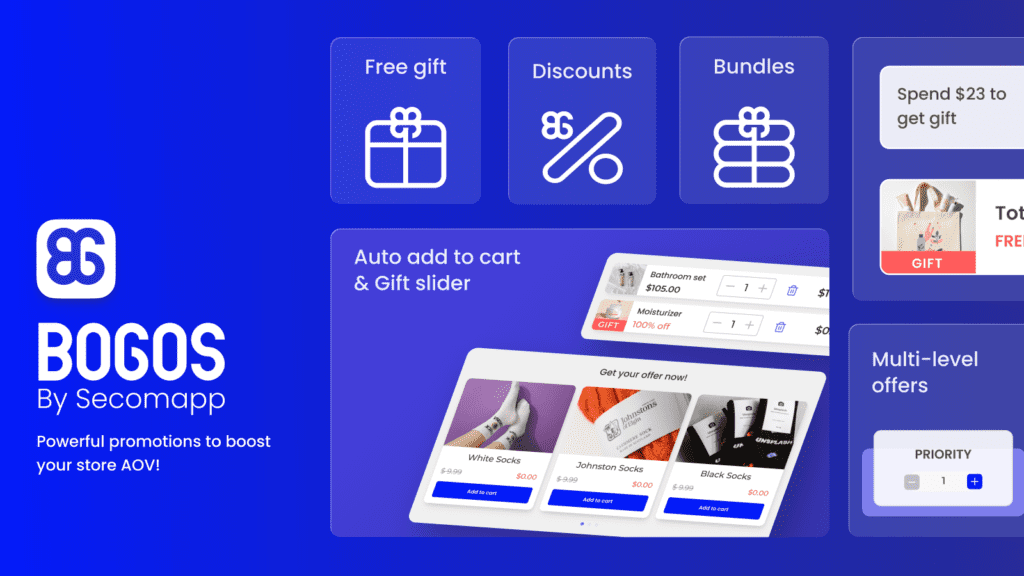
BOGOS is a popular Shopify app that allows you to create custom discounts and promotions. With a 4.9 ⭐ rating and 1,900+ reviews, it’s a trusted solution for many Shopify merchants.
Since its launch in 2014, BOGOS has been helping merchants craft complex discounts and promotions. Developed by Secomapp, a trusted vendor, the app’s user-friendly design and flexibility have made it a go-to choice for Shopify users.
BOGOS lets you create a single discount link that automatically applies multiple discounts. This means customers who click through that Shopify discount URL will snag all the discounts you’ve set up without having to mess with multiple discounts.
With BOGOS, you can roll out complex discounts and promotions that would be tricky to set up using Shopify’s built-in discount feature.
Using BOGOS helps create a smooth shopping experience for your customers while boosting average order value and driving sales. Whether you want to offer BOGO promotions, percentage discounts, or bulk discounts, BOGOS makes it super easy to whip up custom promotions that your customers will love.
To send your customers to a different landing page when they click on a Shopify discount link, follow these simple steps:
Step 1: Open Discounts in Shopify: Go to your Shopify admin and click “Discounts.”
Step 2: Select Your Discount: Click on the discount name you want to share.
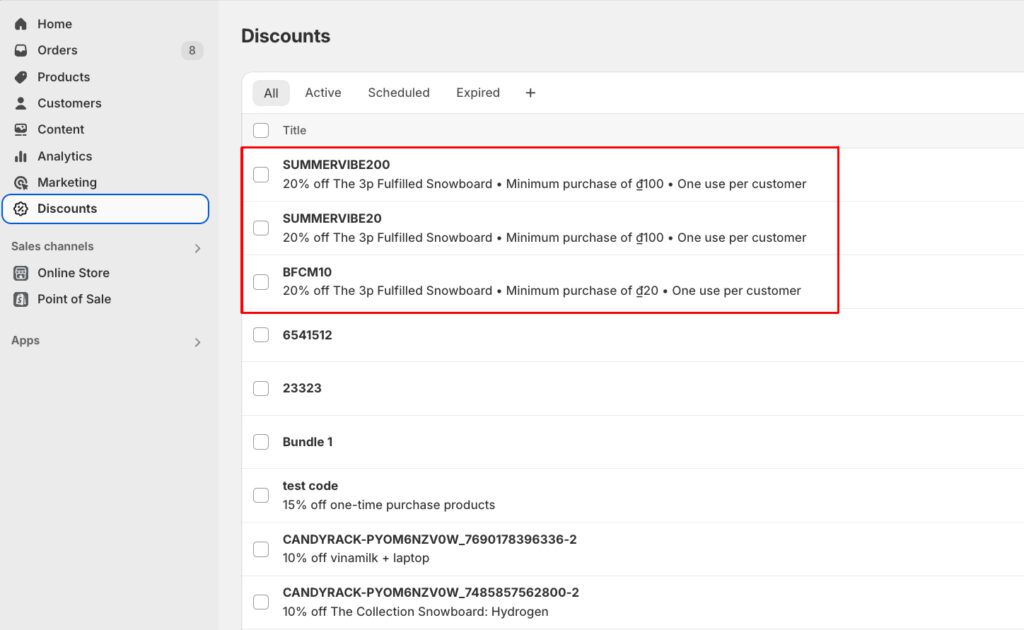
Step 3: Get the Shareable Link: Click “Promote” and select “Get a shareable link.”
Step 4: Copy the Link: Copy and paste the link into a text editor.
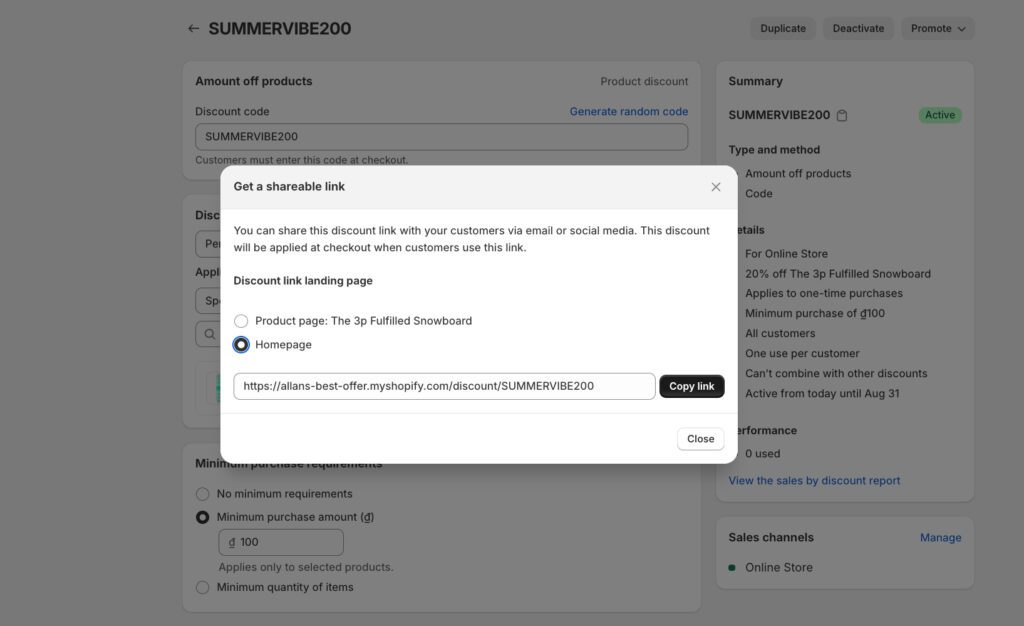
Step 5: Modify the URL: Change the URL from /discount/yourcode to /discount/yourcode?redirect=/your-new-page.
Step 6: Specify the New Landing Page: Replace your-new-page with the specific path of the landing page you want to use.
For example: /discount/yourcode?redirect=/collections/latest-products.
This modified link tells Shopify to apply the discount and then send the customer to the “latest-products” page or whichever page you specify.
Step 7: Share the Updated Link: Once you’ve updated the link, you can post or embed it wherever you want to promote your discount.
Note: If you’re using the BOGOS app, you already have the option to choose the landing page when setting up the discount.
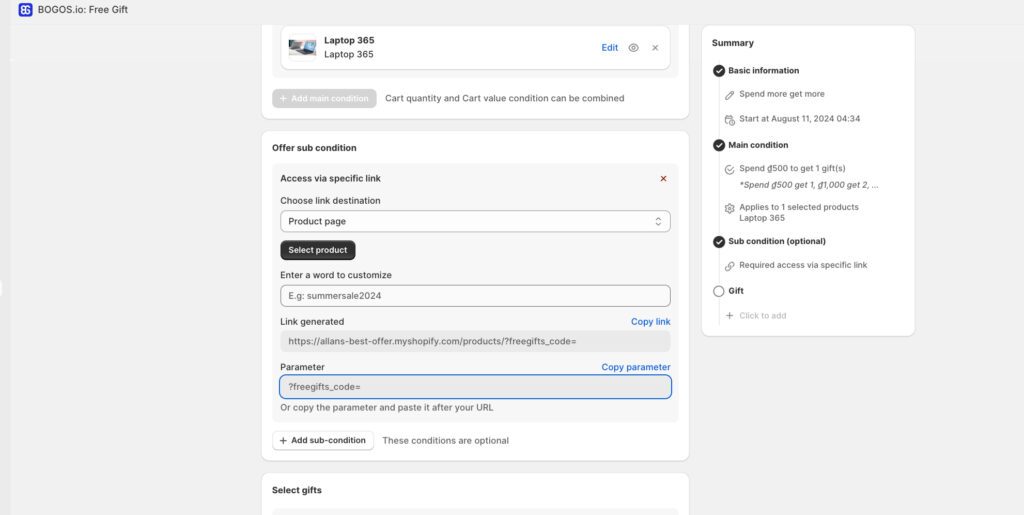
If you’re using Shopify’s built-in discount feature, it’s important to know that you won’t be able to see the revenue generated by each specific discount campaign. Shopify only shows the total revenue from all discounts combined, not broken down by individual campaigns.
To get detailed insights into the revenue generated by each discount link, you’ll need to use an app like BOGOS. You just click “Analytics” and then filter to select the specific discount campaign you want to analyze.

You can easily add Shopify discount links to different marketing channels, helping you reach your target audience more effectively.

Email marketing is still a strong way to share discounts. It lets you talk directly to your audience and has an amazing return on investment of 4300%. (Source: Forbes). Emails also add a personal touch, allowing you to reach out to specific customer groups with relevant deals.
Interestingly, 66% of people have bought something after receiving an email marketing message. (Source: Data Marketing Association).
To get the most out of your email campaigns, think about these simple tips for adding Shopify discount links:
LandCafe.pl, an online shop that sells handmade coffee beans, wanted to make their products more known to newsletter subscribers, help them decide to buy faster, and increase sales.
They made a series of welcome emails to teach new subscribers about their brand and products. The last email in the series had a discount coupon to motivate people to buy. This discount link was an important part of their plan to turn informed subscribers into customers.
The discount link in the last email encouraged subscribers to buy by offering them a reason to purchase after discovering the products. This straightforward strategy of mixing information with a special deal worked really well for LandCafe.pl.
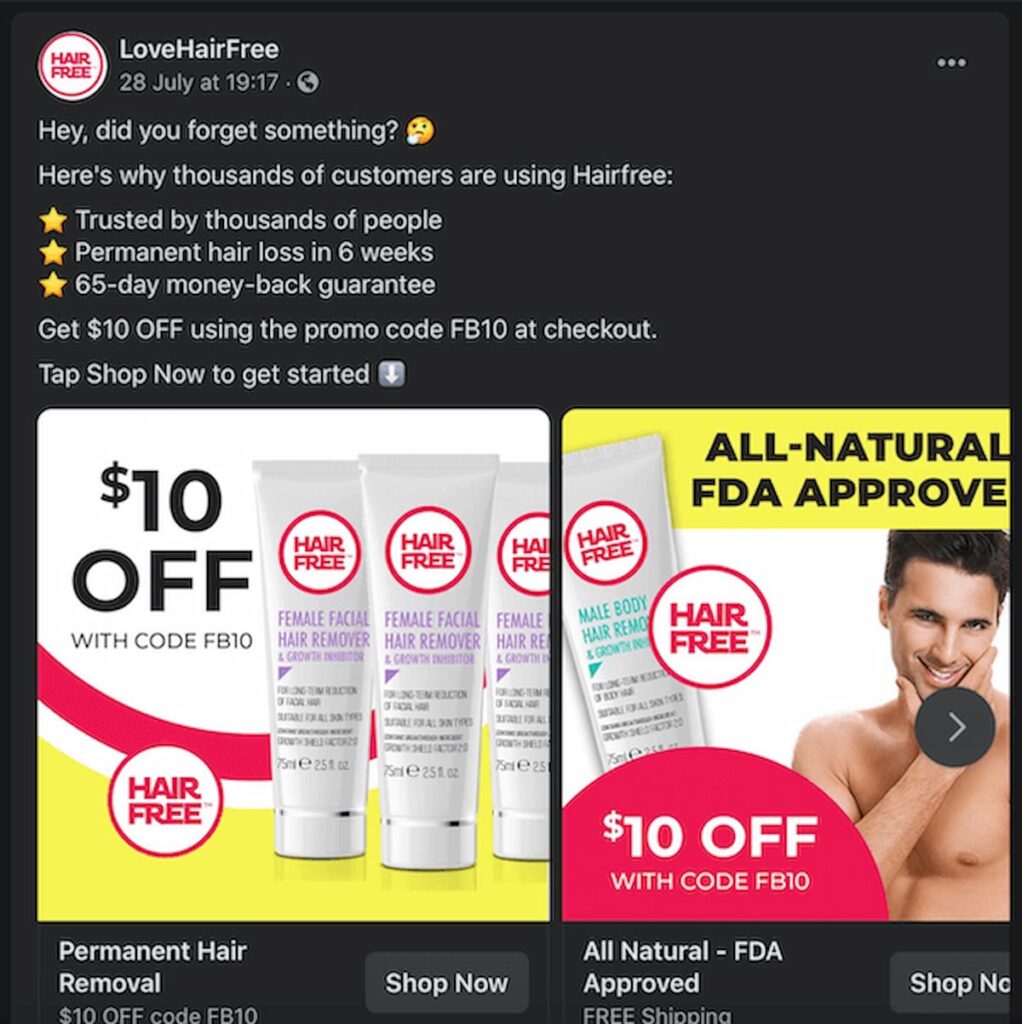
Social media platforms are a great way to reach a larger audience and share your discount offers.
| Platform | Strategies |
| Post ads about your discount link, use Facebook groups and connect with related communities. | |
| Use Instagram Stories with swipe-up links to your discount page, run campaigns with influencers, and include relevant hashtags. | |
| Post interesting tweets about your discount, run ads on Twitter, and interact with related hashtags. | |
| TikTok | Make viral videos of your products and discount links, use popular hashtags, and team up with TikTok influencers. |
To create platform-specific discount links for tracking, use Shopify’s built-in features or some third-party apps. When creating shareable content, include eye-catching visuals, clear calls to action, and engaging text highlighting the discount offer.
Retargeting ads can boost conversion rates by 70% (Source: WebFX). They allow you to reach users who have previously interacted with your website but haven’t made a purchase. You can incentivize them to complete their transaction by offering a discount, turning interest into sales.
Steps to set up retargeting ads with Shopify discount links:
Best practices:

As an e-commerce business owner, you always seek new ways to boost sales, raise brand awareness, and connect with customers. One helpful strategy is affiliate marketing.
Here, we’ll examine affiliate marketing, how it relates to Shopify stores, and how you can use discount links to enhance your affiliate program.
Affiliate marketing is a performance-based marketing model where you partner with individuals or businesses (affiliates) who promote your products or services to their audience.
In return, you pay them a commission for each sale or referral generated through their unique affiliate link. This model is a win-win for both parties, as affiliates earn revenue, and you gain exposure to new customers.
To get the most out of your affiliate program, partnering with the right influencers or complementary brands is essential. Here are some strategies to consider:
I hope you find this post helpful for maximizing your store’s potential with a Shopify discount link! Adding these links to your marketing strategies can make the checkout process smoother, improve customer satisfaction, and really boost your sales. Just remember, a well-placed discount link can turn a casual visitor into a loyal customer. So, start using these tips today and watch your revenue grow!
In Shopify, go to the Discounts section, create your discount code, then click “Promote” and select “Get a shareable link” to generate the discount link.
Yes, Shopify allows you to create a link that automatically applies the discount code at checkout when customers use the link.
You can use the Shopify discount link in emails, social media posts, or other marketing materials to direct customers to your store, and the discount will be automatically applied.
Yes, you can manually edit the link to redirect customers to a specific product or collection by adding a redirect parameter to the URL.
The Shopify discount link is valid as long as the associated discount code is active. Once the code expires, the link will no longer apply the discount.


The “Add to Cart” click is a good start, but high cart abandonment rates-70-80%-prove the completed purchase is the...
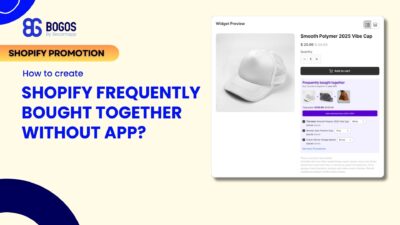
Shopify frequently bought together recommendations can boost your average order value by 10-30% by showing customers complementary products they’re...
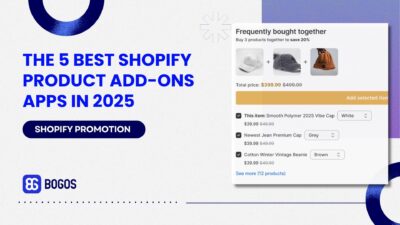
Is your Shopify store making the most of product add-ons? Upselling add-ons is one of the most effective strategies...
